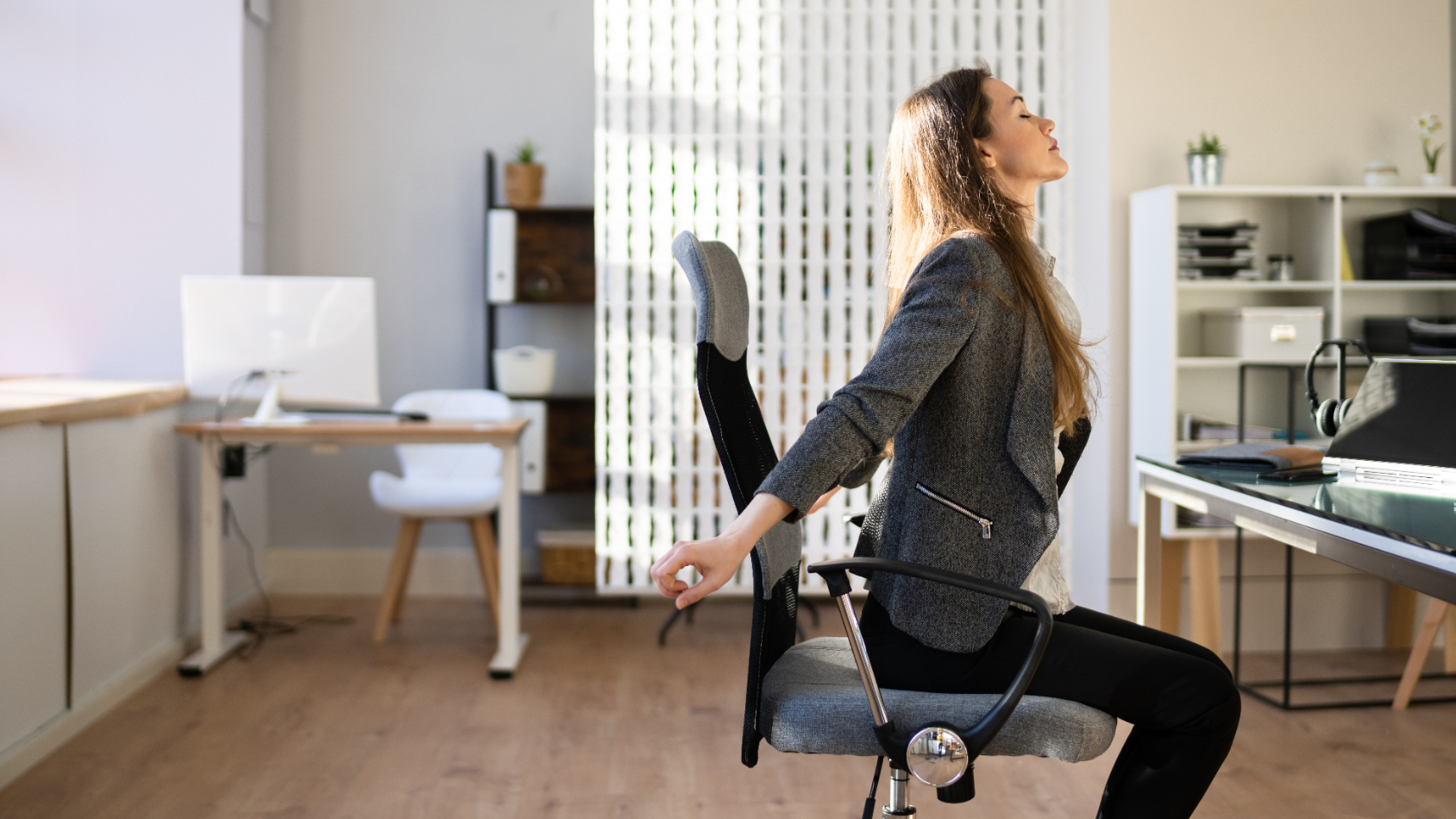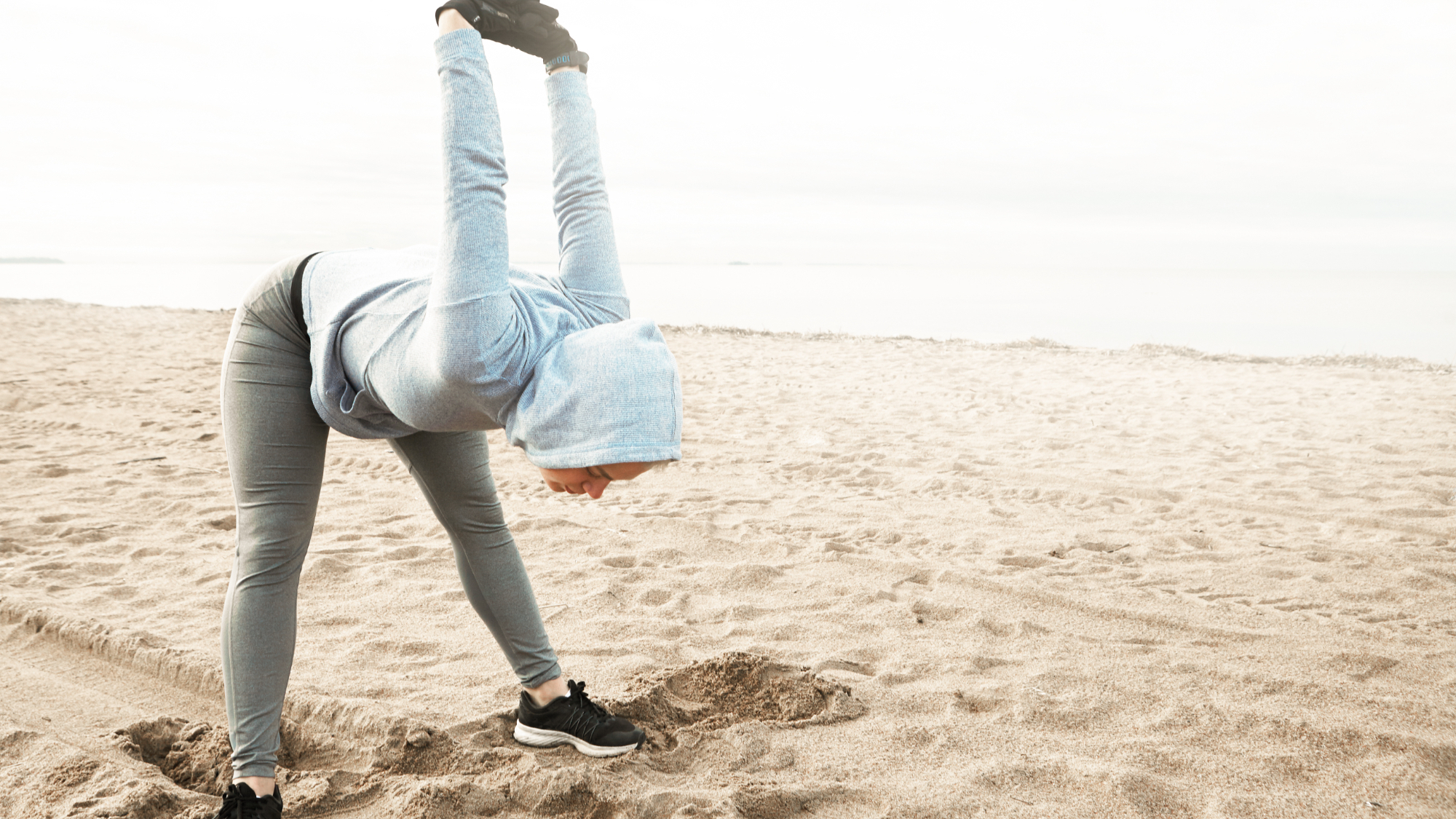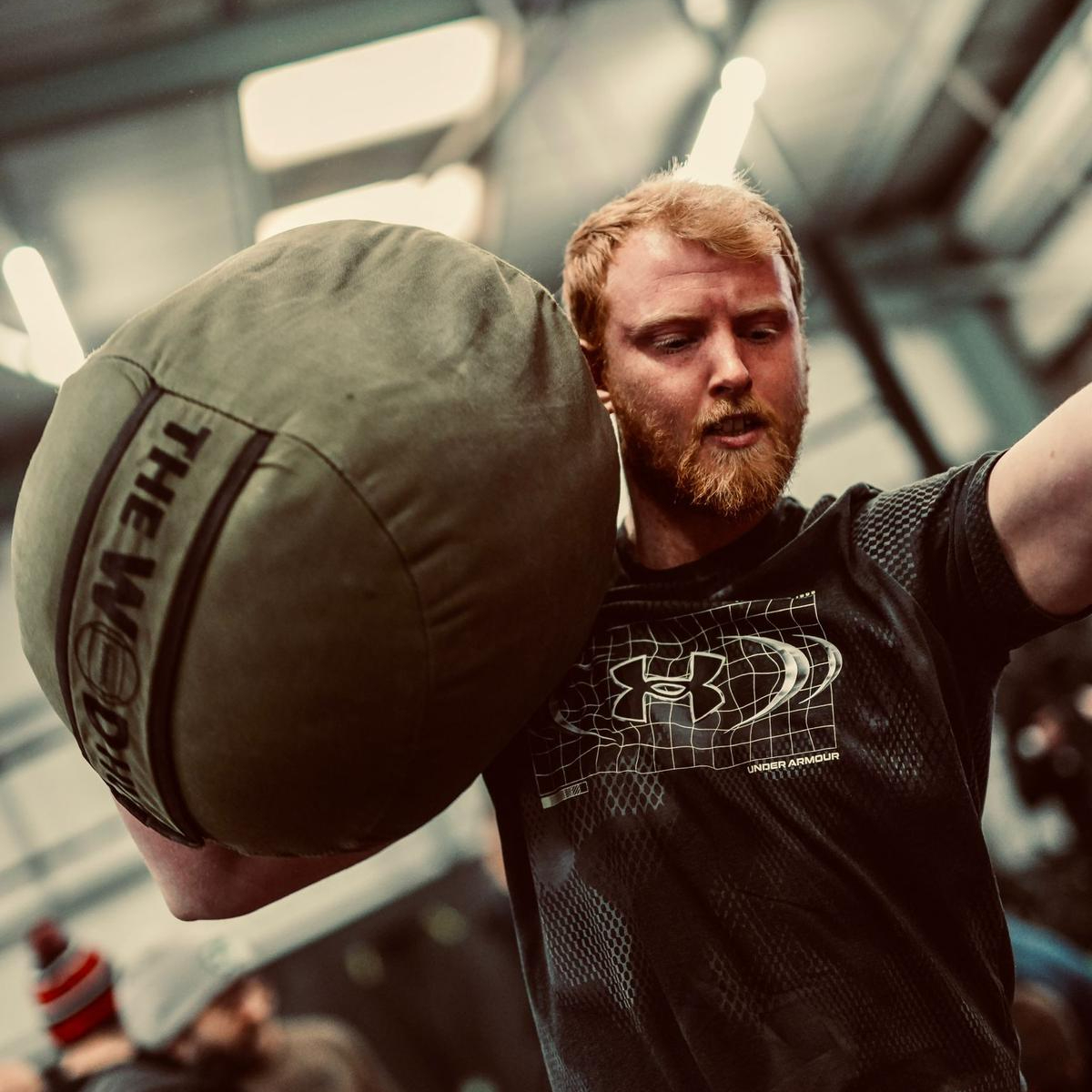‘If I had to choose one stretch for the rest of my life, this is the one’ – a yoga instructor says she does this move every day to destress and improve posture
You can do this accessible stretch after a workout, at home or at your desk to open up your chest and shoulders

If you find yourself with tight shoulders and a stiff spine after sitting at one of the best laptops all day, a quick stretching session can offer welcome relief. But which moves should you choose?
Elma Panagaki, a 500-hour certified yoga instructor based at Bay Club El Segundo, says there’s one stretch she includes in every single one of her classes to promote better posture, lessen stress and relieve tension across the upper body. She simply calls it “the shoulder and chest stretch”.
“Personally, I do it every single day,” she says. “If I had to choose one stretch for the rest of my life, this is the one."
Scroll on to find out how to do it, and why it's a staple in Panagaki's daily routine.
How to do Elma Panagaki’s shoulder and chest stretch

- You can be sitting or standing for this stretch, making it a great one to do at your desk.
- Interlace your fingers behind your back with your knuckles facing down, roll your shoulders blades back and squeeze them together to open your chest, then extend your arms toward the ground.
- Take deep, steady breaths and hold this position for roughly 60 seconds.
Expert tips
“With every breath you’re lifting the chest, you’re creating space to bring more air in, and that helps you descend the shoulders back,” says Panagaki.
However, if you have tight shoulders, you may be unable to interlace your hands behind your back. If this is the case, she recommends holding a towel or yoga strap between your hands instead.
Sign up for breaking news, reviews, opinion, top tech deals, and more.
She also stresses the importance of developing mobility, as well as flexibility – “flexibility is 50% of mobility, which is about stretching and strengthening [the tissues in your body] so you have strength through a full range of motion” at each joint. To do this, she recommends adding an element of movement into your stretches.
“If you want to go one step further with this move, you can go into a forward fold [hinge at the hips to lean forward, as in the picture below] and bring your arms over your head,” says Panagaki. “That will decompress the lower back and give you a beautiful stretch down the back of the legs too.”

Benefits of this stretch
Panagaki says this stretch can have a positive impact on your posture, as well as providing an enjoyable stretch for the shoulders, chest and upper back. Just like the best massage guns, it can help improve your overall range of motion.
“We have bad posture when we’re stressed, when we’re sitting on the couch, when we’re behind the wheel driving for hours," she says. "That puts tension on the lower back, which is going to impact the rest of the body." If your smartwatch or any of the entries on our best fitness tracker list are telling you to stand more often, adding this stretch in is going to help your screen breaks.
“You’re going to feel this stretch in your shoulders and across your chest. This is good for posture, and when we use the word posture we’re talking about keeping the natural curves of the spine.”
But it’s not just your body that will benefit, Panagaki explains.
“This is about body language too. When we feel stressed, we bring our shoulders forward to protect our heart and chest. We deal with stress every day, and unfortunately there’s not always anything we can do about that.
“But we can control what we do with our bodies. Opening the chest helps to build confidence, so the moment you do this exercise with your arms behind you, it helps you feel confident and relaxed.”
You might also like...
- Stretching needs to be a crucial part of your life’ – flexibility expert recommends these three stretches to ‘hit the whole body’
- I tried Chris Hemsworth’s Furiosa workout using just a couple of dumbbells, and it was more effective than I expected
- I've been walking 10,000 steps a day for a year – here are five unexpected benefits I've experienced

Harry is a huge fan of picking things up, putting them down again and writing about it, which uniquely qualifies him for the position of fitness and wearables writer with TechRadar.
He’s an NCTJ-qualified journalist with a degree in English and journalism and several years’ experience covering the health and fitness beat. This has involved writing for the likes of Men’s Health, Women’s Health, Runner’s World, Fit&Well, Live Science and Coach.
Harry is passionate about all things exercise-related, having spent more than a decade experimenting with a wide range of training styles. He's used strength training, bodybuilding, Pilates, powerlifting, gymnastics, rowing, yoga, running, calisthenics, CrossFit and more to build a fit, functional body (and have fun while doing it).
When he’s not writing or training, he can usually be found racing his dog Archie up scenic hills in the south west of England or working to complete his NASM-certified personal trainer qualification.